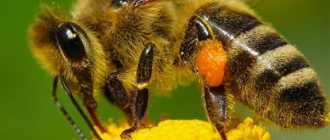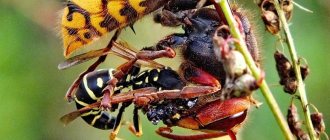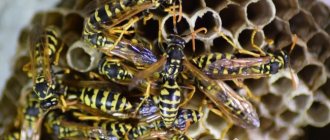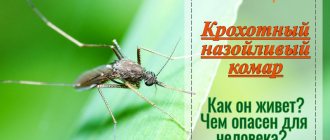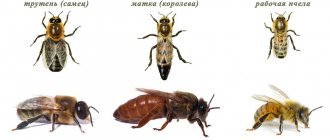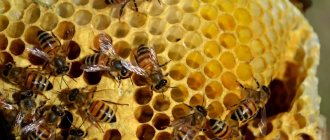Amazing insects that we very often meet - wasp, bee, bumblebee, hornet. How to distinguish them correctly, distinguish them in appearance. We study the life of insects and their behavior. How do their families differ, how do they build their nests and where do they winter. Do they attack each other and who is stronger. What danger do they pose to humans?
Nature gives us a lot of beautiful and amazing things, and insects are an integral part of it. There are a huge number of them and they are all unique in their own way. Some of the insects that people often encounter are wasps, bees, bumblebees and hornets.
We are wary of them because we know well that they can sting very painfully. Next, we will get to know them better, learn about their distinctive characteristics, lifestyle, behavioral characteristics, and also find out whether they actually pose a danger to humans.
What they look like
To be able to easily recognize an insect, you need to know what they look like, each of them has its own distinctive appearance characteristics, let’s get acquainted with them:
- Bee. They are distinguished by the most modest color. There is no sharp transition between the chest and abdomen, the body is shaggy. They have fairly thick legs, which are covered with hairs, and have small jaws.
- Wasp. We all know about the term “wasp waist” and this really only applies to this type of insect; there is a sharp transition between the abdomen and thorax. The body is more elongated and smooth. It has a fairly bright color of the body, there are bright yellow splashes on the black back, and the abdomen is painted with contrasting bright yellow and black stripes. The paws are yellow. The oral apparatus is equipped with fairly powerful mandibles.
- Bumblebee. It has a more impressive body size; its distinctive characteristic is the fluffy cover throughout the body. He also has a beautiful, bright color, has yellowish-red stripes, maybe with a red tint. Bumblebees are found in nature completely black.
- Hornet. They are the largest representatives, their body size can reach 5 cm. They are also distinguished by fairly large and powerful jaws. Outwardly, it resembles a wasp, but the striking difference between the hornet is the absence of a thin waist.
Wasp
Wasps are considered predators and aggressors and can sting just like that, depending on the mood. The wasp has a smooth sting that can pierce the skin several times. Unlike bees, a wasp can use not only a sting, but also a jaw apparatus, biting through the victim. If other individuals are nearby, they can smell the poison and join in the attack.
The painfulness of wasp stings can confidently be placed in third place, and wasp venom is very dangerous for a person who has diabetes of any type. It is said that angry wasps are more likely to attack those who are allergic to their stings. How they recognize this is unknown to science.
Lifestyle and nutrition
When it comes to bees, their diet consists solely of pollen and nectar. They feed with the help of a long proboscis, which is equipped with a mouthparts. Bumblebees and hornets also do not refuse nectar.
Hornets have a real sweet tooth and love berries and fruits, but their diet also includes small insects, which they can easily destroy with the help of their powerful jaws. It is worth saying that they are quite fearless, since there are cases when they even attacked small animals.
Wasps are also aggressors and true predators, but they are not as brave as hornets, since they never choose large victims. They often attack bees, but in this case it is not so easy to win.
The bees are already accustomed to the attacks of their opponents and have developed their own defense schemes, thanks to which they win. Wasps also have a sweet tooth; they love ripe fruits and berries, and their favorite delicacies are honey, jam, and syrup.
All these insects lead a gregarious lifestyle and live in large colonies. But bumblebees go in search of food alone, and it is also worth mentioning that they do this early in the morning, when other nectar lovers are still sleeping.
It's hard to believe, but they can spend 18 hours a day collecting food. Bees go in search of food in small groups, but wasps can gather in groups of up to 30 individuals.
Hornets also go for food alone, and they can easily cover a distance of 10 kilometers. If during such a walk they discover a beehive, they mark the place with a special secretary, which they allocate so that they can return here soon, but with their relatives.
When attacking a hive, they mercilessly kill the bees, biting off their heads and paws. The main prey is honey, which wasps also love. For this reason, insects cannot coexist side by side.
Hornet
The most common representative of this family in Russia is the common hornet, reaching an average length of 4 cm. The hornet is considered the largest species among the hymenoptera insects. It stings when scared or angry; without a visible threat, it will not attack, but when defending the hive or its own life, it can go on the attack. Hornets jealously guard their home and can even make special sounds, warning their relatives of danger. Hornets can sting if you step on it or sit on it without noticing. Also, a hornet, like a wasp, can get into a person’s mouth along with a bitten piece of fruit or a sweet drink.
The hornet's sting is the most painful, as up to 2 mg of poison enters the wound of the victim. The hornet is endowed with the ability to attack its prey several times in a row, thereby inflicting multiple bites. The toxic substance causes burns, which is especially dangerous if the poison gets into the eyes and mucous membranes of a person. Since this insect eats waste protein foods and carrion, it, among other things, can be a carrier of infections.
What can you feel after a hornet bite?
- drop in blood pressure;
- dizziness;
- labored breathing;
- spasms of the gastrointestinal tract;
- disturbance and disappearance of the pulse;
- pain can last from a couple of minutes to several hours.
The danger of bee, wasp, bumblebee and hornet stings increases if a person exhibits allergy symptoms. If the victim is allergic, then after the bite you must immediately seek medical help, because an allergic reaction is one of the most life-threatening. In severe cases, extensive swelling, hives, vomiting, diarrhea, and an attack of suffocation may occur, which leads to anaphylactic shock.
If you have had an allergic reaction to a bee or wasp sting at least once in your life, then most likely the next time you bite it will be more pronounced.
Have you ever been bitten by a hornet?
Habitat
Domestic bees live in hives that humans build for them. Wasps are wild representatives, so they build their homes in trees, often in hollows. Bumblebees love more secluded places, one might say hidden from others, so they can choose an area in the ground to build a nest; less often, their houses are found in tree trunks and birdhouses. All representatives are found in different areas, this could be a forest, a summer cottage, a city park, or botanical gardens.
Hornets choose a variety of places to build nests; these can be the eaves of buildings, tree branches, hollows, or cracks in rocks. But wasps can make their home absolutely anywhere, on the branches of a bush, in the attic, in the stem of a plant, etc. The building material is tree bark, which they moisten with saliva, and it becomes soft; the nests they build look like thick paper.
Differences between insects
These representatives are quite similar to each other, but at the same time they have many differences. They all have the ability to fly, they buzz, and each of them can sting painfully, in addition to which they secrete toxic poison. But they never attack just like that, only when they feel a threat to themselves or their family, this is how they defend themselves.
If you look at bees, it is worth noting their hard work; they are busy working all day long. In addition to collecting honey all day, they also build honeycombs, clean the hive, feed the young generation, provide ventilation to the hive, process and store the collected product.
The life cycle of a working individual is on average 1 month, but the younger generation grows up quickly and families are regularly replenished, so such a short life remains unnoticed by others.
Comparison of insects
Insects belong to the same species; bees and bumblebees are radically different. Not only in appearance and body structure, but also in habitat.
By appearance
Visual differences:
- The coloration of bumblebees is more varied than that of bees, this is due to thermoregulation and mimicry. The main species are bright yellow with black chaotic fragments, possibly stripes. Less common are black bumblebees. The entire surface, except the eyes, is covered with thick, long hair.
- Unlike the bumblebee, the color of the bee is dark yellow with pronounced brown stripes along the abdomen. The main background can change depending on the view to darker or lighter, the presence of stripes is constant. The pile is short, poorly visible on the upper part of the abdomen.
- Unlike a bee, a bumblebee has a larger body size. Females reach 3 cm, males - 2.5 cm. The insect's abdomen is rounded without concavity upward or downward. Females are equipped with a smooth, jagged sting, which is retracted after a bite. The poison is non-toxic.
- The bee grows up to 1.8 cm (depending on the species), drones are larger than worker bees. The abdomen is flat, oval, elongated, concave downwards, and the female has a sting at the end. The sting is jagged; after the insect bites, it cannot be removed; it remains in the victim, and the bee dies.
- The head structure of insects is similar, the differences are minor.
- The structure of the wings is the same, the amplitude of movement is circular. Due to the well-developed pectoral muscles of the bumblebee, the wings move more often than those of the bee, so bumblebees fly much faster.
Habitat
Bombus pascuorum tolerates low temperatures well due to its ability to self-heat. The range in the Russian Federation has spread to Chukotka and Siberia. The hot climate is not suitable for insects; bumblebees are practically not found in Australia. This feature distinguishes a bumblebee from a bee. The bee, on the contrary, prefers to settle in regions with a warm climate. In Australia, unlike Bombus pascuorum, there are a large number of species of the insect.
Lifestyle difference:
- Both representatives of bees feed on the nectar of flowers; bumblebees do not give particular preference to a particular type of plant, except for clover; they spend the whole day eating. They return to the nest for a short period of time to feed the queen and bring nectar for the brood.
- Bees take less time to feed themselves; their task is to prepare raw materials for honey.
- Bumblebees build their nests close to the ground in a layer of last year's leaves, in the burrows of small rodents, less often in nests abandoned by birds, among stones. Bees - in hollows of trees, between branches, less often in attics of homes or mountain crevices. Insects do not build nests low to the ground. The difference in the internal arrangement lies in the location of the honeycombs and the building material used.
Quality and chemical composition of honey
Both types of insects produce honey. The bumblebee product differs from the bee product in the concentration of active substances and consistency. Bee honey is much thicker, insects store it for the winter, the volume per colony is much larger, so people use bees to produce bee products. Chemical composition:
- amino acids;
- vitamin compounds;
- glucose;
- minerals.
Due to the higher water content, bumblebee honey has a liquid structure. The number per family is minimal. Does not have long shelf life. At positive temperatures, the fermentation process begins. Bumblebees collect it from a larger variety of plants, so the concentration of the composition is much higher, unlike bees. Compound:
- carbohydrates (fructose);
- proteins;
- amino acids;
- potassium;
- iron;
- zinc;
- copper;
- set of vitamins.
Attention! In bumblebees, honey contains a greater amount of active substances than bee honey, and therefore is a strong allergen.
Wintering
Apis mellifera live within a year, all representatives of the hive hibernate (except for drones). Few of the old individuals remain; most die during the honey harvest season. Only working individuals are engaged in preparing honey for the winter. Specially designated honeycombs are completely filled with honey; there should be enough of it until spring. After removing the drones from the nest, the bees clean the wintering area, using propolis to seal all the cracks and the exit passage.
Unlike bees, Bombus pascuorum does not harvest honey. They collect it to feed their offspring. Males and working females take part in the honey collection process. By winter, all adults, except the queens, die. Of the bumblebee females, only young, fertilized ones overwinter. They go into suspended animation and do not feed in winter. From spring the life cycle continues.
Differences between a bumblebee and a bee
These are close relatives who have a fairly wide habitat. In fact, they have a huge number of differences. In total, there are about 300 species of bumblebees that live throughout the continents. The hind legs of females have a very beautiful shiny coating.
From edge to fold, the paws are covered with villi, which serve as a basket for collecting pollen. They have a round abdomen, without folded edges. The sting has a tubular internal structure, through which the poison penetrates under the skin when a bite is applied. The sting is smooth without serrations, so it can sting repeatedly without causing any harm to itself.
In turn, there are about 20 thousand species of bees, some of which have not been studied by science to this day. We all know that they are major pollen collectors and honey producers, as well as plant pollinators. They have 3 pairs of legs; on the inside there are villi, which also serve as baskets for collecting pollen. Abdomen bent downward.
Unlike the previous representative, they have an empty sting covered with jagged edges. When a bite is applied, these barbs cling to the edges of the wound, from which the sting comes off along with part of the abdomen, and the bee soon dies.
Let's look at the visual differences:
- Bumblebees have a round body and are much larger in size; bees have an elongated body.
- Bumblebees have brighter colors.
- Bees are used in open areas to collect pollen and pollinate plants, while bumblebees are used in greenhouses.
- A bee can only sting once, but bumblebees can sting multiple times.
What to do if you are bitten by a bumblebee, hornet, wasp or bee?
Allergist-immunologist Mikhail Shkalev
answers
— A bumblebee, unlike a bee, does not leave a sting in the skin when it bites. So you don't have to take it out. However, this bite is dangerous, as it can cause a severe allergic reaction. Deaths from it are very rare, but they do happen. Therefore, you should immediately take action and drink Tavegil or Suprastin; in principle, any antihistamine will do. If you don’t have any tablets with you, drink more liquid. And then, anyway, don’t be too lazy to go to the pharmacy and buy some antiallergic drug. To relieve pain and reduce swelling, apply ice to the bite site. And under no circumstances drink alcohol, this supposedly folk method will only do harm. After all, alcohol dilates blood vessels and thereby promotes the spread of poison throughout the body. It is also important to understand that the bumblebee itself never attacks. If he bit you, then it was an act of protection of the insect, and not some kind of malicious intent on his part. Therefore, do not kill a bumblebee, as this may provoke aggression from its female relatives. Male insects cannot harm you - they do not have a sting.
Allergist-immunologist Vladimir Bolibok answers
— Hornet bites, and at the same time all other insects, should be taken very seriously, since it is impossible to predict the body’s reaction: some will get away with only a flash of sharp pain and swelling, while others may die from anaphylactic shock. The risk category, as you understand, primarily includes allergy sufferers. But drinking an antihistamine, nevertheless, will not hurt those who do not consider themselves to be such. If Suprastin or any other antiallergic drug is not at hand, then try to drink more. This will help your body resist the unwanted effects of the bite. You should also pay attention to whether the sting remains in the skin. If so, remove it and apply something cold to the bite site. There is no point in trying to suck out the poison; on the contrary, it can lead to even greater swelling.
If you are stung by a bee or wasp, the first thing you need to do is thoroughly wash the bite site, it is important to wash off all the dirt and remaining poison.
After this, carefully remove the sting so that the released poison does not spread. This can be done with your fingers or using tweezers, a knife or a needle. Remember that before the procedure, you need to wash your hands, and the instruments must be disinfected. Only bees leave a sting, so if you are bitten by a wasp, do not try to find the sting and do not pick at the wound.
Having pulled out the sting, you need to disinfect the wound itself - for this you will need alcohol, iodine, brilliant green, hydrogen peroxide, furatsilin solution. You can wash the bite site with any antiseptic or even regular soap. Once again, it is better not to touch the wound or the affected area of the body, do not rub it, and especially not comb it.
Immediately after treating the wound, take any antihistamine , even if you have never had an allergic reaction to anything before.
Until the swelling subsides, try to drink as much fluid as possible - hot sweet tea or sweet water. Victims of a wasp sting are advised to sit down or lie down.
Usually the pain, redness and swelling disappear after a few hours or days. If a wasp stings your face, the swelling can last about two days.
If the number of bites was more than three, then a general toxic reaction may begin. The most dangerous are bites on the lip, tongue or larynx - in this case, the swelling that appears after the bite, spreading to the entire larynx, can lead to suffocation. In both cases, you should immediately seek medical help.
By the way
– A bee can sting only once in its life, it has a jagged sting that gets stuck in the layers of skin and comes off, which leads to the death of the bee. – Wasps, hornets and bumblebees can sting many times, as they have smooth stingers. – Wasps sting people much more often than bees. – A wasp sting is much more painful than a bee sting. – If a person is bitten by several dozen wasps at once, then a general toxic reaction of the body occurs. Bites of more than 500 individuals are considered fatal.
Folk remedies should be used if there are no medicines or disinfectants at hand. The bite area can be treated with parsley (mash a parsley leaf and apply the juice to the bite area) or rub it with something sour that you have on hand - sour berries, vinegar, citric acid.
The pain is relieved by the milky juice of dandelion.
To relieve swelling, you can make lotions from tea, ice, aloe juice, onion, parsley, and plantain. A piece of sugar applied to the wound, a heating pad with cold water, an ice cube or a handkerchief previously moistened with cold water, and calendula tincture will also help relieve swelling.
Tips for allergy sufferers
It is believed that there are few people in whom a wasp or bee sting can cause such a strong and life-threatening reaction - approximately 2 or 3%. But if you know you are prone to allergic reactions, when going outdoors, take antihistamines with you.
The general first steps after a wasp or bee sting include applying a tourniquet above the bite site. To prevent a decrease in blood pressure caused by urticaria, the victim can be given 25 drops of cordiamine.
Attention!
You should seek medical help if: – you have been bitten on the face, – you have been bitten on the lip, tongue or larynx, – you have been bitten by more than three wasps or bees – in this case there is a high probability of developing a toxic reaction.
For allergy sufferers, wasp or bee stings can cause dizziness, vomiting, diarrhea, anaphylactic shock (blood pressure drops sharply, laryngeal stenosis occurs, the voice becomes hoarse), nausea, convulsions and even loss of consciousness. Therefore, without hesitation, seek medical help immediately after a bite and provide first aid.
Safety regulations
Bees and wasps generally only bite when they think they are being attacked, so it is best not to wave your arms at them. If you are very afraid of these insects, it is worth buying a special aerosol that repels insects.
Based on materials from AiF
Differences between a hornet and a wasp
The largest representative of the wasp family is the hornet. The length of its body can reach 5 centimeters. In addition to the size of the body, differences also apply to the structure of the body. Hornets have a large head, a fairly wide and large chest, which is darker in color, and the abdomen is also larger.
There are differences in the construction of nests, namely in the building material:
- Wasps. They use tree fibers to build their houses. They moisten them in their saliva and chew them, obtaining a pliable building material. From the outside, such a house resembles crumpled paper; such a house has numerous layers, with honeycombs placed in the lower part.
- Hornets. They use rotted stumps and wood as building materials. Their nests are dark brown in color.
Regarding the territories where they live, they can be found in all regions of the country except the northern ones. In some regions, hornets are considered an endangered species. Regarding wasps, they are considered useless stinging insects, which is completely unfair.
Hornets inflict very painful stings, during which they release paralytic poison, which is highly concentrated. If a person suffers from allergic reactions, a bite can cause anaphylactic shock and even be fatal.
Wasps are distant relatives of wasps and ants. They differ in that they do not care for their offspring at all, they lay eggs in cells, after which they seal them and never return to them.
They have a sting about 5 mm long. They attack people only for protection when they feel danger. They attack with powerful jaws and then use a sting. At one time they can bite and sting several times. They feed on nectar, pollen, fruit and tree sap, and their diet also includes caterpillars and spiders.
Vegetarians and carnivores
The honey bee (Ápis melliféra) is a social insect that lives in families in which the responsibilities of all members are strictly regulated.
- The head of the family is the female - the queen bee. The insect's body consists of 3 sections - head, chest and abdomen, and is covered with the finest chitinous hairs.
- The bee is an absolute vegetarian and feeds on nectar, pollen and honey, which is fermented nectar. To collect and carry nectar, she has a proboscis and a special goiter. Pollen collection occurs due to hairs on the body and brushes or combs on the legs.
- In the back of the abdomen there are 2 poisonous glands and a sting with serrations and a reservoir for accumulating poison. The stinging apparatus is designed primarily to penetrate the chitinous cover of insect competitors, and gets stuck in the skin of a mammal, including humans. In this case, the honey producer cannot pull out the sting, leaves it in the skin of her victim along with part of the intestines, and dies. 100-200 such attacks cause severe poisoning in a person, more than 500 - death.
- Man uses not only the results of the vital activity of these amazing creatures - honey, bee bread, propolis, wax, but also bee venom. Its healing properties are so high that an entire medical branch has developed on its basis - apitherapy. The poison is used to treat a wide range of diseases, primarily diseases of the musculoskeletal system, as part of medications, and also in its pure form. To do this, the insect is applied to the sore spot so that it stings. Treatment is carried out under the strict supervision of a doctor.
This is interesting Keeping bee colonies in double-hull hives
The bumblebee (Bombus) is a relative of Ápis melliféra and belongs to the same family. This is a large, thick, hairy hymenoptera: the female reaches 28 mm in length, the male – 24 mm. It is also a social insect, living in small families of up to 100 individuals.
- The roles in the family are less clearly defined than among the inhabitants of the hives, although the basis of the family is the fertile female, the only one of the entire family who remains to spend the winter. The remaining members die by winter.
- The nests are located close to the ground, under moss or between rocks, and consist of honeycombs made from rough wax or empty cocoons.
- Bombus feeds on nectar and pollen and also produces honey. In many respects, bumblebee honey is superior to the product produced by the inhabitants of apiaries, but it is impossible to collect it in sufficient quantities - insects do not stock up, since the colony does not stay over the winter.
- He is an unrivaled pollinator. Greenhouse employees are trying to attract it to their farms in order to improve the fruitfulness of plants.
- The sting of this hymenoptera is hollow, without serrations, only females have it, which can use it repeatedly. The insect is not aggressive; it stings very rarely, but is painful. Swelling and numbness develop at the site of the lesion.
The external difference between the well-known paper wasp and the honey bee is visible to the naked eye: the body of the first is slender, smooth, the thorax at the junction with the abdomen becomes thinner, the body of the second is more rounded and shaggy.
The wasp, in accordance with the entomological classification, is a representative of a special family, which includes many species. In our region, the most widespread are vespids, or the paper variety.
- The name comes from the fact that these social stalked bellies chew wood and make paper out of it, from which they build spherical nests.
- In the nest, the female builds a honeycomb and lays eggs there. Later they hatch into larvae. If the queen is removed, workers begin to lay eggs. The number of nest inhabitants during a season can reach several hundred, but in winter most of them will die. Fertilized females survive the winter and establish new colonies in the spring.
- The main difference between vespids and hive dwellers is in the food system. Paper nest builders, like most species of the wasp family, are predators. Moreover, adult individuals feed on flower nectar and fruit juice, but their larvae require protein food. They chew flies, butterflies, pieces of meat, spoiled fish or carrion and feed their larvae in this way. Other species paralyze their victims - insects, caterpillars and spiders - with poison and lay their eggs in them, alive but immobilized. As the larvae develop, they feed on “fresh meat.” It is these differences between the wasp family and honey producers that explain its tendency to attack for no apparent reason.
- The sting of these Hymenoptera is hollow inside, has no serrations, and is also an ovipositor. It does not get stuck in the skin of a mammal, and its owner can sting several times. The thin “wasp waist” allows the hymenoptera to fold almost in half and strike in any position. The poison is much more allergenic than the poison of the inhabitants of apiaries, causing severe pain, swelling and cell destruction, especially in the case of an attack on the face - nose, eyes, mouth. Sad statistics confirm that every year several dozen people around the world die due to wasp attacks.
- These stalked bellies are equipped with powerful jaws with which they inflict painful bites.
This is interesting Formic acid, its use in beekeeping
Video: wasps through the eyes of bees and a beekeeper.
Differences between bees and bumblebees and wasps
Bumblebees have a round body covered with fluffy fibers; they are darker than wasps and larger. Wasps, in turn, can boast of a bright, provocative color. The diet of bumblebees and bees consists of nectar and pollen; they use their proboscis to feed.
The wasp is omnivorous; in addition to pollen and nectar, they feed on the juice of fruits and trees; their diet also includes small insects. They often attack bee hives, using strong and sharp jaws.
Honey production
Bee and bumblebee honey differ in the amount of minerals and proteins in their composition, and its consistency also differs. Bumblebee honey is thinner, but several times richer in composition. It lasts longer than bee honey. It is kept in the refrigerator so that it does not ferment.
Bees and bumblebees pollinate many plants over the summer; they are the real workhorses of the insect world.
Wasps do not collect nectar or pollen and do not produce honey. They sit on a flower only in search of food for the larvae, looking for aphids or other small insects. The destruction of small insect pests is considered their work merit. Bees feed their offspring only with nectar.
Who is stronger: a bumblebee or a wasp
Their differences lie in the nature of their behavior: if the wasp is quite aggressive and easily attacks an enemy who is much larger than it in size, then the bumblebee is a very peaceful insect, and only in extreme cases uses its weapon.
Quite often, wasps attack the nests of peace-loving bumblebees in order to steal their food supplies; they attack with the help of their jaws and stings. When the bumblebee family is healthy, they easily cope with the attackers, but if it is weak, the wasps win, and can kill not only the working individuals, but also the entire young generation.
What stings a wasp, a bee and a hornet
The wasp is a very aggressive insect; when attacking, it uses its sting and jaws. Only females have a sting, this is a modified ovipositor, and all of them have biting jaws. She bites more often, but she can use her sting up to five times in a row. The number of injections and poison depends on the age of the insect; the older, the stronger.
The bee is not so aggressive by nature and attacks only if its life is threatened. She pierces the victim's skin with a modified ovipositor. The sting, having notches, catches on the puncture and breaks off along with a piece of the bee's belly. After this, the bee dies.
The hornet is as aggressive as a wasp and can attack a person who disturbs its habitat. The hornet both bites and stings. The sting is sharp and strong and can sting several times. Hornet venom is considered less toxic than bee venom. Based on the size of the insect and the amount of poison that enters the victim’s body through the sting, it poses a danger to human life.
Important! If a person’s body is weakened or susceptible to allergies, without assistance, anaphylactic shock and a tragic outcome may occur.
Knowing the difference between stinging insects, you can avoid the risks of encountering them. These insects not only sting, but also bring great benefits, and when you learn about them, you should treat them kindly.
The main advantage of a bee is its usefulness on the farm. These are the main producers of honey, wax, propolis, beebread, and pollinators of flowering plants. Wasps and bumblebees are also beneficial: bumblebees are used to pollinate greenhouse plants, wasps destroy many aphids and caterpillars during the season. Useless and a hornet's nest.
Where do hornets and wasps spend the winter?
With the arrival of cold weather, wasps go for the winter; for this they need to find a secluded place. Most often they overwinter under the bark of a tree, in the cracks of outbuildings, hollows, and old stumps. Until this time, they must accumulate a large amount of nutrients, which will be gradually consumed throughout the winter. They leave the nest they build over the summer and never return to it.
In hornets, this process is almost identical, but there are differences. Over the summer, they build a nest and make nutritious food reserves, raising the young generation. With the arrival of autumn, the females leave the nest to mate and then find a secluded place for the winter. At that time, the workers begin to close all exits from the nest; throughout the winter they will remain inside and feed on the reserves they have made.
If severe frosts strike, unfortunately, the working individuals will die, but the queen will remain, and with the arrival of warmth, she will lay eggs and create a new swarm. Wintering involves deep and long sleep, which continues until early spring.
Females that left the colony in the fall, after hibernation, look for a new place to build a nest and create a separate colony. These amazing insects are listed in the Red Book as they are considered an endangered species.
Preparing for winter
And for winter, they prepare in different ways. Naturally, there were attempts to tame the bumblebee, but man failed. Before wintering, these noisy insects almost disappear; many die off. Only young queens can continue their journey; they hibernate, hiding in a secluded place. And in early spring everyone starts anew, builds a nest, lays eggs.
But his smaller sister can afford to spend the winter in the hive, but the temperature outside will not become comfortable. If you do not have allergies, or you were bitten in areas other than the most sensitive ones, such as the neck, eye, mouth, etc. – Then you can quickly relieve unpleasant symptoms at home.
Pull out the sting with tweezers (if it remains), treat it with an antiseptic, and apply a cold compress. If you have an allergy, you need to take an antihistamine and consult a doctor. It is advisable for everyone to drink a lot of water so that the poison dissolves faster. I wish you this spring to avoid meeting a bee family.
So that not only nature blooms, but also the soul sings. And let the bumblebee, hornet, wasp and bee fly on their way. That's all for me, friends, until we meet again, I say goodbye to you! Subscribe to my channel so as not to miss a lot of interesting things. Share the post on social networks. And don’t forget to clean your YouTube channel and website.


